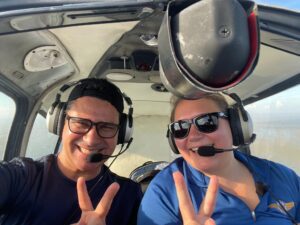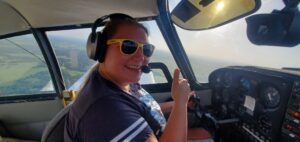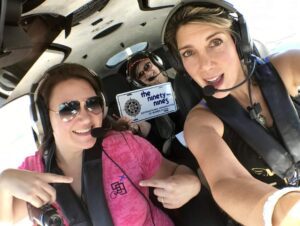
Why Women Make Great Airline Captains
Throughout the history of aviation, pilots have always been celebrated and revered for their skill, intelligence, and courage. While the image of the classic airline pilot is often portrayed as male, the truth is, women have been flying since the earliest days of aviation. Even though they were once marginalized and even excluded from flying, women have persisted and proven that they are not only capable of being pilots, but exceptional ones at that. Here’s why women make great airline captains:
- Attention to Detail: Piloting an aircraft requires meticulous attention to detail, from pre-flight checks to reading instruments and responding to changing weather conditions. Many women naturally excel at tasks that require detailed attention and precision.
- Communication Skills: Effective communication is essential in aviation, especially during critical phases of flight and emergency situations. Women, often touted for their communication skills, can articulate their thoughts clearly and precisely, ensuring the safety and coordination of flight operations.
- Emotional Intelligence: A good captain isn’t just skilled in flying; they’re skilled in managing a crew. Women often score high in emotional intelligence, allowing them to understand, empathize, and react appropriately to the needs and feelings of their crew, thereby fostering a positive work environment.
- Risk Assessment: Multiple studies suggest that women, on average, tend to be more risk-averse than men. In the context of aviation, this translates to a more cautious approach to safety and decision-making, ensuring the wellbeing of passengers and crew.
- Diversity of Thought: Having a diverse set of pilots, including women, brings a broader range of perspectives and experiences. This diversity can lead to more robust problem-solving and decision-making in challenging situations.
- Adaptability: Women in traditionally male-dominated professions often have to adapt and learn quickly to thrive. This adaptability is a valuable trait for airline captains who often face unpredictable situations that require quick thinking.
- Role Models for the Future: Having women in leadership roles such as airline captains can inspire a whole new generation of female aviators. They stand as testament to the fact that with determination, skill, and passion, any gender barrier can be overcome.
In conclusion, while both men and women possess the qualities to be exceptional airline captains, it’s essential to recognize and celebrate the unique strengths that women bring to the cockpit. As the world pushes for more gender equality, it’s crucial to support and acknowledge the tremendous contributions of women in aviation. Their presence not only ensures safe and efficient flights but also paves the way for a brighter and more inclusive future in the skies. That’s it for today, until next week, Be Social, Fly Private!

 The demand for new pilots in the private aviation business world has really changed. Once, the skies were vast and empty, with only a few pioneers daring to take flight. But with time, technology advanced, and the dream of soaring through the clouds became a reality for many. In the United States, private aviation had experienced a meteoric rise, and with it came an unprecedented need for new pilots to navigate the ever-expanding skies. The private aviation business world was flourishing, driven by the desires of high-profile executives, celebrities, and discerning travelers who sought unparalleled convenience, luxury, and efficiency. The advantages of flying private were evident, as it offered personalized flight schedules, direct routes to remote destinations, and the avoidance of the often chaotic commercial airport experience. However, the industry found itself at a critical juncture recently. A shortage of experienced pilots began to loom on the horizon, casting a shadow over the thriving enterprise. The soaring demand for private aviation services outpaced the number of skilled pilots available, leaving business jet operators grappling with the challenge of satisfying their clients’ needs.
The demand for new pilots in the private aviation business world has really changed. Once, the skies were vast and empty, with only a few pioneers daring to take flight. But with time, technology advanced, and the dream of soaring through the clouds became a reality for many. In the United States, private aviation had experienced a meteoric rise, and with it came an unprecedented need for new pilots to navigate the ever-expanding skies. The private aviation business world was flourishing, driven by the desires of high-profile executives, celebrities, and discerning travelers who sought unparalleled convenience, luxury, and efficiency. The advantages of flying private were evident, as it offered personalized flight schedules, direct routes to remote destinations, and the avoidance of the often chaotic commercial airport experience. However, the industry found itself at a critical juncture recently. A shortage of experienced pilots began to loom on the horizon, casting a shadow over the thriving enterprise. The soaring demand for private aviation services outpaced the number of skilled pilots available, leaving business jet operators grappling with the challenge of satisfying their clients’ needs. I think I should buy my own jet is a statement I hear often from many of our newly referred clients. Owning your own private jet or even a prop plane is a big endeavor for any person or business. Let’s look at the beginning for people interested in actually owning and flying their own plane or jet.
I think I should buy my own jet is a statement I hear often from many of our newly referred clients. Owning your own private jet or even a prop plane is a big endeavor for any person or business. Let’s look at the beginning for people interested in actually owning and flying their own plane or jet.